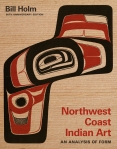A student recently came by my office to talk about Atalie Unkalunt, a Cherokee vocal performer, lecturer, actor, and writer of the early twentieth century. Reading too quickly through an introductory email, I thought that the student perhaps meant Mary Ataloa McClenden, the legendary Chickasaw singer and teacher. While I’d never heard of Atalie, I’d run across Ataloa while researching American Indian concert vocalists for my 2004 book, Indians in Unexpected Places. There were a lot of these singers—Tsianina Redfeather, Princess Watawaso, Irene Eastman, Oskenonton, Yolachie, Falling Water, Sausa Carey, Kiutus Tecumseh, Carlisle Kawbawgam, to name just a few. Somehow, though, I’d missed Atalie Unkalunt, who was (despite sharing four out of six letters in her stage name) not Ataloa.
The moment reminded me of two issues central to my new book, Becoming Mary Sully: Toward an American Indian Abstract. First, no matter how well we think we understand our pasts, there are always individuals hidden to us, human footnotes in the flow of our narratives who are so deeply buried as to be invisible. I thought I knew the world of early twentieth-century Native vocal performers. But Atalie Unkalunt reminds me just how fragmentary my knowledge—our knowledge—really is. I have no doubt that more and more such performers will emerge, claiming space in the stories we tell.
Mary Sully—the professional name used by my great aunt Susan Deloria—may well offer the definitive example of such an invisible footnote of a person. Between the late 1920s and the mid-1940s, she made ravishingly beautiful, highly intelligent art that was shown to the world on perhaps four or five occasions. Her medium was colored pencil—the tools of an artist struggling with poverty—and her work followed a form that she called the “personality print,” a three-panel triptych that developed themes and iconographies across distinct styles—modernist abstraction, geometrical design patterns, and Native-influenced imagery and design. The personality print was quite literally meant to capture the essence of an individual, and Mary Sully focused her attention on an archive of popular culture celebrities—Babe Ruth, Helen Keller, Betty Boop, Bing Crosby, and 131 others. Like Atalie Unkalunt and Mary Sully herself, many of these people have now faded into deep-footnote obscurity. Who remembers Alice Fazende, the last Confederate widow, or Jesse Crawford, the “poet of the organ”?
The second issue Atalie Unkalunt pressed on me was that when we move people from the footnotes to the main text, there’s a good chance we change the very nature of the story. Here, too, I’ve found that Mary Sully matters. Indeed, in Becoming Mary Sully, I suggest the ways in which she’s a game-changing artist.
The story of early-mid-twentieth century Native American art has had a story not unlike the one I once told about Native musicians performing operatic arias and Indigenous melodies while garbed as Indian princesses and chiefs. In that story, in the first half of the twentieth century, Native crossover artists, supported by patrons, teachers, art markets, and schools, created new forms of art in New Mexico, Oklahoma, and elsewhere. Their work was brilliantly creative and technically excellent—but it was also circumscribed by the desire of non-Native supporters for a brand of primitivism that emphasized Indigenous pasts, “traditional” subject matter, flat perspectives, and featureless, timeless backgrounds.
Put Mary Sully’s work into this story and watch the narrative change. Her work reversed anti-modern primitivism (indeed, one might call it instead “anti-primitivist modernism!). In that sense, Sully asks us to rethink not simply a story about Native American art, but about the far more intimidating category “American Art” itself. For all its anonymity, Sully’s work sought out dialogue with artists we more easily place in the “American” canon: Aaron Douglas, Diego Rivera, Charles Demuth, Marsden Hartley. And when Mary Sully is read as something other than a footnote, we find ourselves contemplating a significant cohort of Indian women who made similar efforts to engage the wider world of American art: Edmonia Lewis, Angel De Cora, Wa Wa Cha, Tonita Pena, and many others.
These arguments might ring a familiar echo for those fortunate to have seen the recent Hilma auf Klint exhibition at the Guggenheim Museum in New York City: a previously obscure artist, lifted from the footnotes and, on the strength of the work, elevated into the main narrative of the invention of modernism, utterly transforming that story in the process. I’m not an art historian—but it seems to me that the world of art scholarship and appreciation is caught up in an amazing moment of footnote rescues and returns of the repressed. It’s a moment when Atalie Unkalunts and Mary Sullys have a chance to leap out of the past and take a second shot at the main texts and the master narratives that evaded them in life.
Philip J. Deloria (Dakota descent) is professor of history at Harvard University and the author of Indians in Unexpected Places and Playing Indian. His most recent book, coauthored with Alexander I. Olson, is American Studies: A User’s Guide. He is a trustee of the Smithsonian Institution’s National Museum of the American Indian, where he chairs the Repatriation Committee; a former president of the American Studies Association; and an elected member of the American Academy of Arts and Sciences.



















































